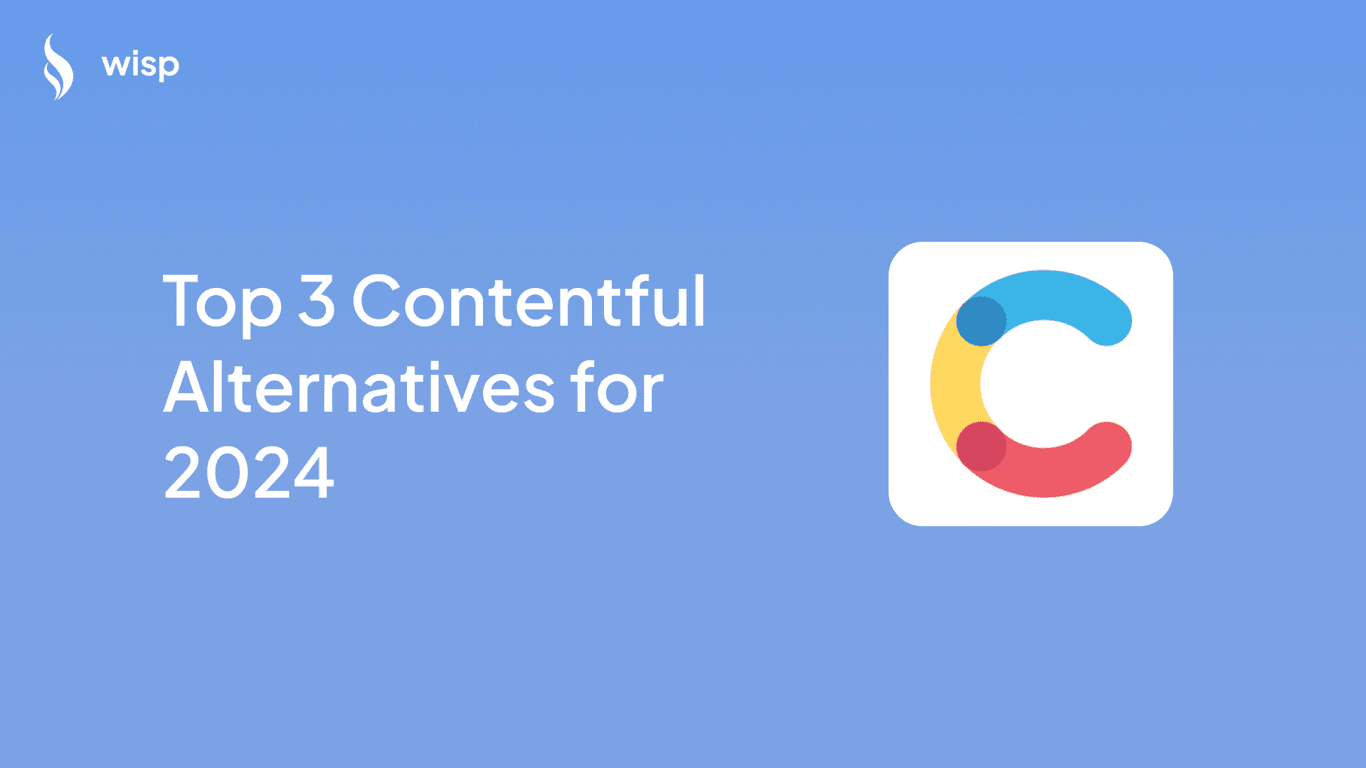
Introduction
Choosing the right Content Management System (CMS) can make or break the efficiency and effectiveness of your website. Craft CMS has been a popular choice for developers and content creators due to its flexibility and robust features. However, like any platform, it is not without its flaws. This article explores three top alternatives to Craft CMS for 2024, providing insights into their benefits and how they address common pain points associated with Craft CMS.
Common Pain Points of Craft CMS
Performance Issues
One of the recurrent issues faced by Craft CMS users is performance lag. Various users have reported that Craft CMS can be super slow at times, especially on shared servers. This is often due to the system's reliance on the information_schema table, among other factors. For example, one user reported that certain queries could take between 20 to 30 seconds to run, significantly slowing down their site’s performance (Source: GitHub Issue).
Complexity and Learning Curve
Craft CMS is known for its steep learning curve, which can be a deterrent for new developers. Though it is well-documented and laid out, the initialization phase can still be challenging. Some users have expressed that it’s vastly different from other CMS platforms they are familiar with, such as WordPress and Joomla, which can make the transition difficult (Source: Reddit Thread).
Limited Built-in Features and Customization Issues
Another pain point is the limited built-in features that require reliance on plugins for extended functionality. Users have pointed out that while there are many high-quality plugins available, this can lead to additional complexity and potentially higher maintenance (Source: Servd Host).
Top 3 Craft CMS Alternatives for 2024
1. Wisp CMS
Overview and Key FeaturesWisp CMS is designed to offer a delightfully simple and clean editorial experience, making it a top contender for those who find Craft CMS cumbersome. Some of its standout features include a distraction-free editor, seamless headless CMS architecture, and powerful Content API.
Pros & ConsPros:
User-Friendly: Wisp provides a clean, focused writing environment that is easy for content creators.
Developer-Friendly: Simple integration with JavaScript frameworks like Next.js and Vue.js.
Performance: Lightning-fast edge API and global delivery via Cloudflare CDN.
Cons:
Limited Complex Customization: While it's perfect for simpler blogging needs, it may not be as suitable for more complex website requirements.
Wisp CMS addresses many of the common pain points of Craft CMS by offering an easy setup process for developers and a clean, distraction-free writing environment for content creators. The performance-related issues are mitigated with a global CDN and optimized API.
Learn more about Wisp at Wisp Blog. Try the distraction-free editor at Wisp Editor, or fork the Next.js blog template at Next.js Blog Starter Kit.
2. Strapi CMS
Overview and Key FeaturesStrapi CMS is a popular open-source headless CMS built with JavaScript, designed to provide developers with the flexibility they need to build customizable and scalable APIs. Some of its key features include customizable API endpoints, extensive plugin ecosystem, and the ability to create custom content types with ease.
Common Pain Points of Strapi CMSStability and Scalability Issues: Users have reported that Strapi experiences stability issues when scaling. For instance, a significant number of users have faced difficulties with Strapi's stability and scalability, making it less reliable for larger projects (Source: Strapi Forum).
Difficult Updates and Version Management: Strapi’s updates, especially major version updates, can be challenging. Users often find that updates can break existing functionality and require significant effort to manage, making continuous development less efficient (Source: Reddit Thread).
Lack of Comprehensive Types and Complex Customization: Strapi lacks some common types without plugins, such as array types, which should be inherent in any comprehensive CMS. This limitation forces users to rely heavily on plugins and custom solutions to achieve desired functionality (Source: GitHub Issue).
Pros:
Customizable: Offers extensive customization options with flexible API endpoints.
JavaScript-Friendly: Built with JavaScript, making it easier for developers familiar with the language.
Plugin Ecosystem: Wide range of plugins available to extend functionality.
Cons:
Stability Concerns: Less reliable for large-scale projects due to stability issues.
Challenging Updates: Major version updates can disrupt existing setups.
Complex Customization Needs: Requires additional plugins for comprehensive functionality.
Strapi provides more flexibility in terms of API customization compared to Craft CMS. However, it shares some of the complexity issues and has its own set of stability and update challenges. While Craft CMS is known for its steep learning curve, Strapi’s frequent updates and stability issues pose a different kind of challenge for developers.
3. Statamic CMS
Overview and Key FeaturesStatamic CMS is a flat-file CMS that offers a unique approach to content management. It eliminates the need for a traditional database, making it lightweight and fast. It is designed to be developer-friendly while providing a powerful and flexible CMS for content creators. Key features include a flat-file architecture, flexible content modeling, and an intuitive control panel.
Common Pain Points and SolutionsLearning Curve for Developers: Some developers find the flat-file approach of Statamic different from traditional CMS platforms, which can require a learning curve. However, Statamic's extensive documentation and active community help mitigate this challenge.
Limited Built-in Features: Like many CMS platforms, Statamic's out-of-the-box features may not cover all use cases. However, it offers a robust marketplace for addons and extensions that can fill these gaps.
Scalability Concerns: While the flat-file system offers speed and simplicity, it may not be suitable for very large websites with extensive content. Statamic provides strategies for scaling, such as the use of caching and CDN integration.
Pros:
Fast and Lightweight: The flat-file architecture makes Statamic incredibly fast and easy to deploy.
Flexible Content Modeling: Allows for highly customizable content structures.
User-Friendly Control Panel: Provides an intuitive and efficient control panel for content creators.
Cons:
Learning Curve for Developers: Requires some adjustment for developers used to traditional database-driven CMS platforms.
Limited Built-in Features: Relies on addons and extensions for some advanced functionalities.
Scalability Concerns: May require additional strategies for very large websites.
Statamic offers a refreshing alternative to traditional CMS platforms with its flat-file approach. Compared to Craft CMS, Statamic is faster and easier to deploy but may require additional adjustments for complex websites. It provides a balance of flexibility and simplicity that can be appealing to both developers and content creators.
Conclusion
In conclusion, while Craft CMS continues to be a popular choice for many developers and content creators, it is essential to consider its common pain points and explore alternatives that may better fit your needs. Wisp CMS, Strapi CMS, and Statamic CMS each offer unique advantages that address different aspects of the challenges associated with Craft CMS.
Wisp CMS stands out for its user-friendly editorial experience and developer-friendly setup, making it an excellent choice for those looking for simplicity and efficiency.
Strapi CMS, with its extensive customization and plugin ecosystem, offers flexibility but comes with its own set of challenges in terms of stability and updates.
Statamic CMS provides a fast and lightweight solution with its flat-file architecture, ideal for developers seeking a combination of speed and flexibility.
Ultimately, the right CMS for your project will depend on your specific needs and priorities. We encourage you to explore these alternatives and make an informed decision. Happy content managing!



